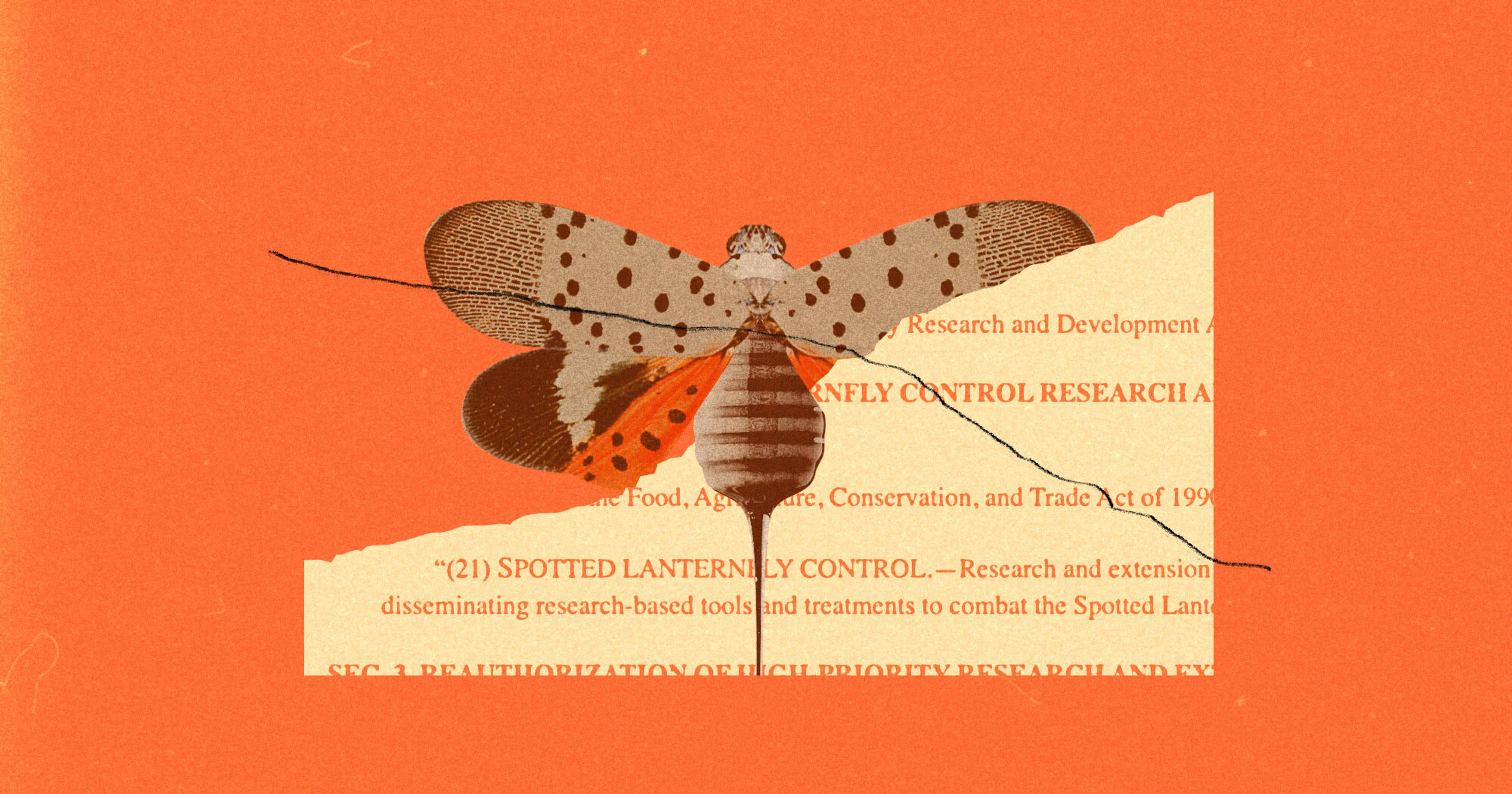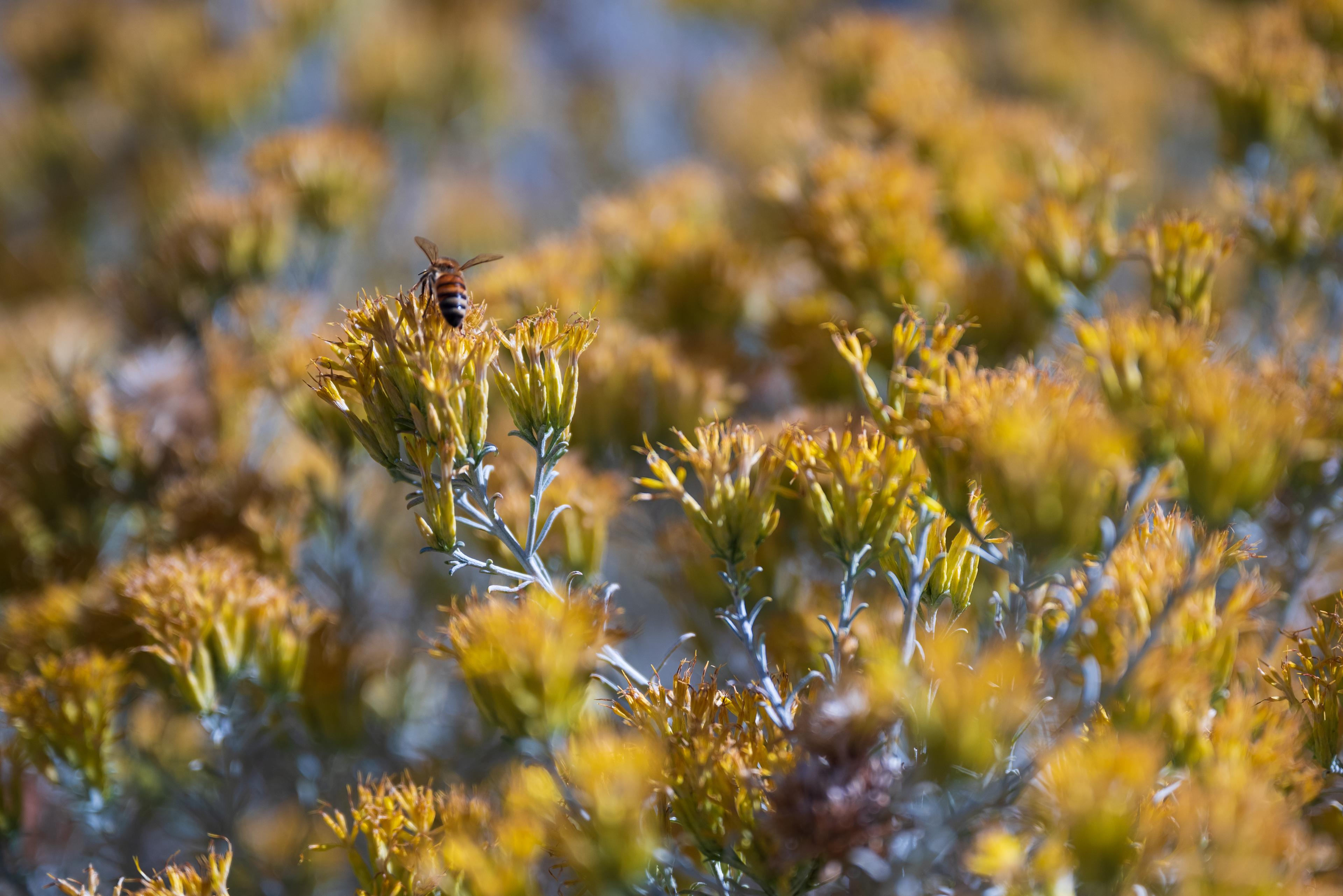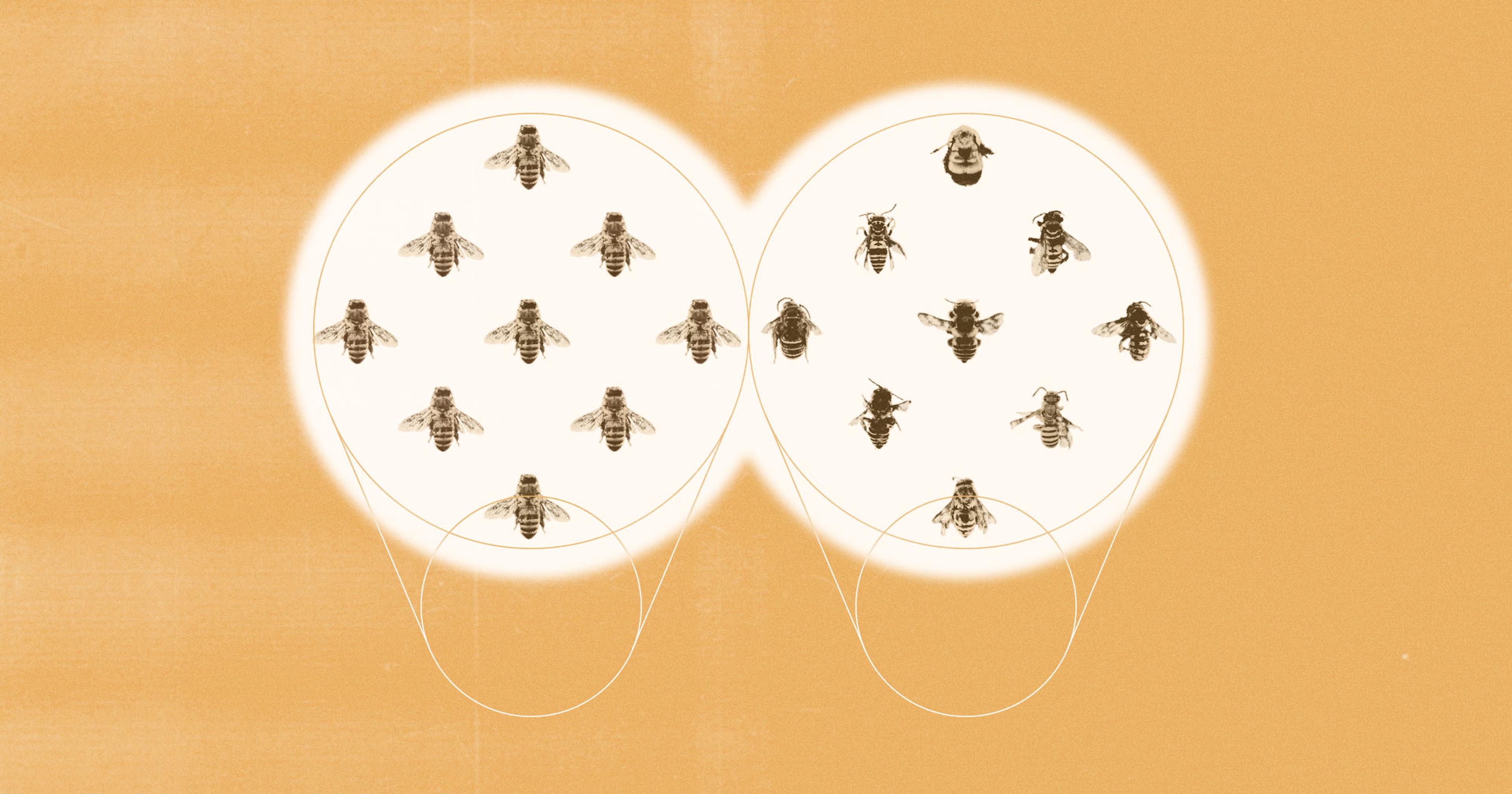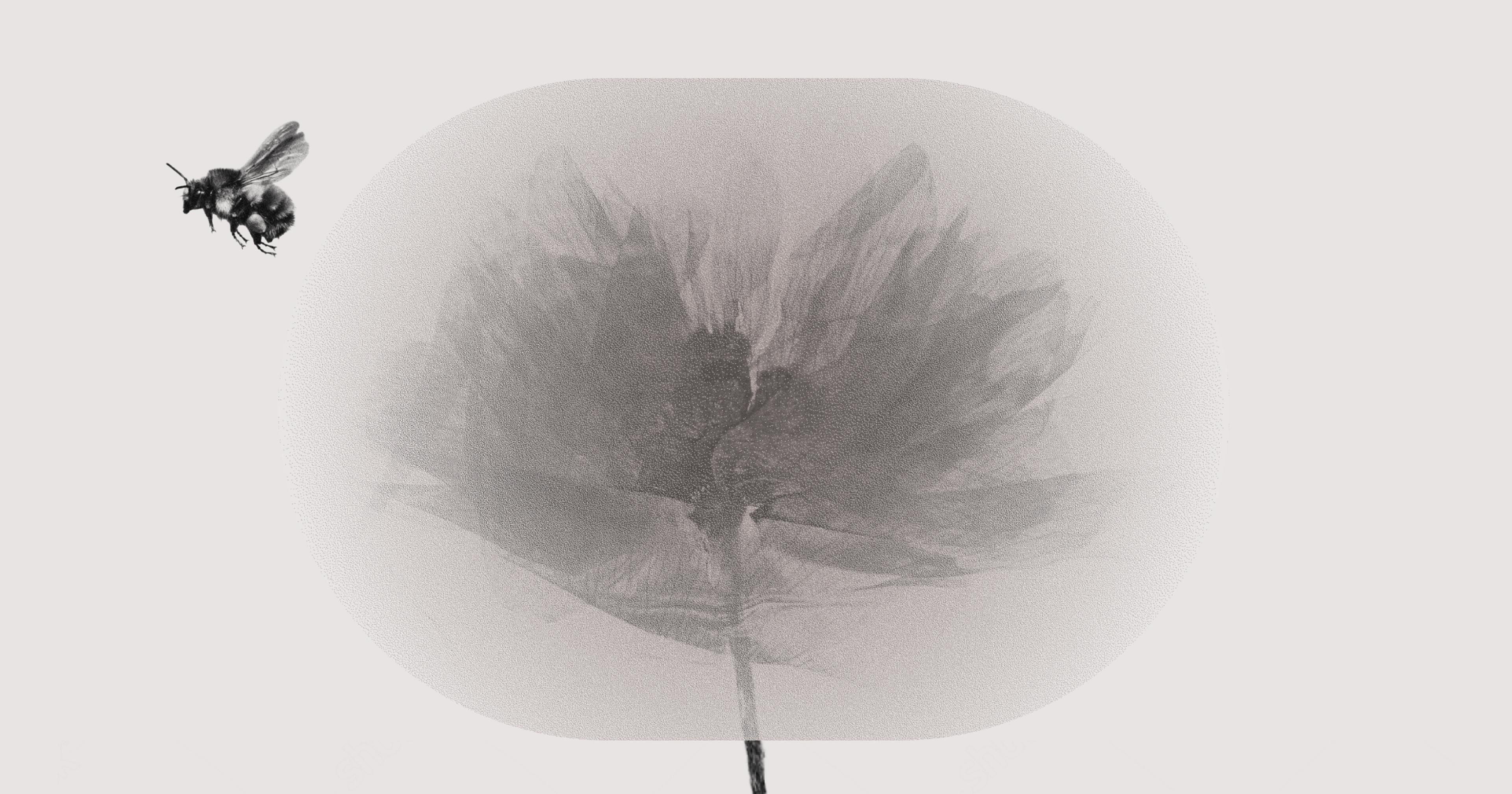The unlucky, unloved invasive lanternfly has one benefit: It’s leading to copious production of a new type of honey.
As owner of Philadelphia Bee Company, part of Don Shump’s job is to remove hornets, bees, and wasps from his clients’ property. An admitted bee lover, Shump shies away from chemicals in the process, in an effort to prevent harm to honeybee colonies. Instead of using chemicals for bee removal, he uses a vacuum-type instrument. A few years ago, after removing and then processing a hive, he noticed a distinct, “smoky bacon” scent in the air. “I don’t always have a sure sense of the nectar source, but sometimes it’s obvious,” Shump said.
As an experienced beekeeper, he can often identify spring honey from a locust or oak tree, for instance, with its lighter hues and hints of vanilla. Or in the fall, a darker version from goldenrod. Each has a distinct color and taste, and experienced beekeepers generally have a good idea of what they are harvesting and from what source. Bees will feast on nectar and pollen they collect from nearby flowers and trees, producing the more common versions like clover, acacia, or wildflower honey.
When Shump tasted the dark, smoky honey in 2019, he was curious. “I called the state inspector to ask about it, and he told me everyone in Southeastern Pennsylvania was reporting the same thing,” he explained. “I sent my samples to a Penn State extension that was testing honey for DNA.”
It turns out that Shump’s new type of honey had an interesting origin: the invasive and damaging spotted lanternfly.
Eating invasive species — or in this case, a product thereof — is something of a growing trend. From garlic mustard to knotwood, even snakehead fish in Maryland, invasive species are making their way onto plates as a method of helping mitigate their damage. This differs from the widespread messaging to East Coasters on spotted lanternflies, which is to “see it, squish it, report it.” In other words, it’s one of the first invasive species that state governments have coached the public to flat out kill.
The spotted lanternfly arrived in the United States in Berks County, Pennsylvania, around 2014, probably hitching a ride on a shipment of stones from China. They’ve since spread out to at least 13 states, largely in the Northeast and Mid-Atlantic regions. An agricultural pest, the bugs are harmful to several types of trees, such as tree of heaven, oaks, and black walnut. They can be particularly devastating to grapevines, however. “Because trees are larger, they can recover from the damage,” said Robyn Underwood, a Penn State Extension educator in the department of entomology, and one of the nation’s leading experts on the lanternfly. “Grapevines, however, can outright die from the damage.”
The flies suck on sap and then excrete honeydew, a sticky, sugary liquid. When the insects with red, white, and black features reach adulthood, they produce honeydew at scale, which then morphs into a sooty mold as it lingers on trees and plants. This, in turn, prevents photosynthesis. Impacted plants like grapevines struggle, and often die.
If there’s a silver lining to be had, however, it’s that honeybees love lanternfly honeydew.
A Sticky Circle of Life
Underwood understands well the lanterfly’s relationship to honey production. “In 2019, I collected around 200 samples of this new honeydew honey,” she explained. “Our biggest concern was that when the honeybees collected the honeydew, they might also be collecting the pesticides used in an attempt to kill the lanternflies.”
These insecticides are systemic, which users spray on the plants where lanternflies congregate; the bugs then ingest the poison while drawing sap from the tree. While the insecticides do kill the pests, they have not successfully halted their spread in any meaningful way. Underwood wanted to ensure the insecticides were not harming either the honeybees who ingested the honeydew off these trees, or humans via honey consumption. “We rarely found pesticides in the honey samples, and if we did, it was in parts per billion,” she said. “That’s not enough to hurt a bee, much less a human.” While Underwood is uncertain the reason for this, she said it may be that the samples were highly diluted, or that people sometimes collected from untreated trees.
Underwood and Penn State’s analysis also confirmed that the lanternfly was indeed the reason for the new honey. “We’re not sure yet, from a chemical perspective, why this honey is different from other sources normally harvested in the region,” said Underwood.
In Europe, honeydew honey isn’t the novelty that it is in the United States, but its source is aphids. There, aphids feed on oak trees, as well as various conifers, leading bees to produce a dark, intense, sometimes “woodsy” flavor. But while aphid honeydew isn’t harmful to plants and trees, lanternfly honeydew is. The difference is in how the insects release it from their bodies.
Aphids produce a slow, small amount of the substance that usually accumulates on their abdomens, serving as a tasty treat for other animals to lick off their tiny bodies. The lanternfly, in contrast, produces vast quantities of honeydew, which they shoot out of their abdomens and in turn, coat nearby trees and plants.
A Beneficial Novelty
For some beekeepers, the lanternfly contribution has led to a boon in production. Bill Vondrasek, who works for the national park service at Baltimore’s Fort McHenry, has been a hobbyist beekeeper for about a dozen years. “This year, I noticed a different kind of honey that showed up in between our normal spring and fall harvests,” he said. “I never stopped harvesting this year, when I would normally take a break over summer.”
Where Vondrasek usually extracts around 300 pounds of honey each year, this year he counted over 700 pounds. The color was darker, too, which got Vondrasek to wonder what was causing the difference. “I had read reports about the spotted lanternfly invading Maryland, and then I started seeing them,” he says. “A lightbulb went off and I realized they were probably behind the new harvest.”
While Vondrasek hasn’t marketed his new honey any differently than other jars he sells on his website, Shump jumped at the opportunity. Dubbing the new honey “Doom Bloom,” it has become his bestseller. “Not long after I tried it, we did a honey and cheese pairing in Philadelphia,” Shump said. “We paired Doom Bloom with blue cheese, and it was the hit of the night.”
Like anything, taste is subjective. “I personally can’t stand the flavor,” laughed Underwood, “but when we did a blind taste test at Penn State’s agriculture progress days, 90 percent of tasters said they liked it or loved it.”
The lanternfly honey’s benefits may not end with increased production for beekeepers, either. Underwood is currently collaborating with a researcher from the University of Texas in San Antonio to see what the honey’s medicinal value might be — some medical facilities turn to honey for wound care in cases where skin infections prove resistant to antibiotic ointments. “So far it’s showing more antimicrobial properties than manuka honey,” she says.
While lanternfly honey is proving its mettle, even the beekeepers would like to see a solution to the harmful pest behind it. “It’s an unexpected benefit for beekeepers,” said Vondrasek. “But I’m an environmentalist, and I wish they weren’t here.”










